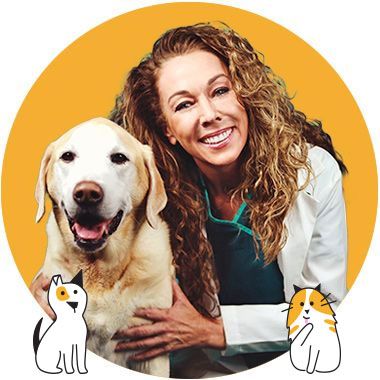Caring for Cats and Dogs with Fading Sight
Vision loss changes how your pet navigates the world, but with a few adjustments, they can continue to live full, comfortable lives. These simple strategies can help you maintain their quality of life.

STORY AT-A-GLANCE
- Visual impairment in cats and dogs can develop suddenly or gradually from conditions like cataracts, glaucoma, diabetes, or injury, but it does not mean the end of a full, happy life
- Most pets adapt remarkably well by relying on smell, hearing, and memory. Subtle behavioral changes, like bumping into objects or hesitating in low light, often signal early vision loss
- Keeping your home layout consistent and free of hazards helps blind pets navigate safely. Use texture, scent, and gentle lighting to reinforce comfort and spatial awareness
- Daily routines and gentle communication are essential. Use calm verbal cues, sensory-based toys, and structured schedules to build confidence and keep your pet active and engaged
- Progress takes time. Regression is normal during adjustment, but with patience, reassurance, and steady habits, blind pets thrive and continue to enjoy the same activities they always loved
Cats and dogs depend on their vision to explore, play, and interact with the world around them. When blindness sets in — whether gradually or suddenly — it can be challenging at first, but losing sight does not automatically mean losing quality of life. Many blind pets adapt surprisingly well and continue to be themselves.
Your role is to support that adjustment to help your pet feel safe, confident, and capable again. With patience, consistency, and a few thoughtful changes to their environment and routine, blind pets can live full, joyful lives, defined not by what they have lost but by how naturally they learn a new way to live.
Causes of Blindness in Pets
Blindness is a partial or total loss of vision that can occur at any age and for many reasons. Some pets are born with underdeveloped or nonfunctional eyes, while others lose sight gradually through disease or suddenly from injury. Common causes include:1,2
- Cataracts — A cataract clouds the lens of the eye, blocking light from reaching the retina. It can develop gradually with age or appear suddenly due to diabetes, trauma, or inflammation. Cataracts are one of the most common causes of blindness in older dogs and may progress to total vision loss if not treated. Cataracts can also be a trigger for glaucoma (see below).
- Glaucoma — This is characterized by increased pressure inside the eye, which damages the optic nerve and retina. It can develop slowly or strike acutely, causing pain, tearing, or a bulging appearance of the eye.
- Progressive retinal atrophy (PRA) — PRA is a hereditary condition in which the retina gradually degenerates over months or years. It is most common in breeds like Cocker Spaniels, Poodles, and Irish Setters, but also occurs in some cats, such as Abyssinians and Persians.3,4
- Sudden acquired retinal degeneration syndrome (SARDS) — This condition causes rapid and total destruction of the retina, often within days. It primarily affects middle-aged to older dogs, especially females, and is often associated with endocrine disease (diseases involving hormone imbalances5).
- Diabetes mellitus — In diabetic pets, high blood sugar damages small blood vessels in the eye and can cause cataracts or retinal disease. Diabetic cataracts are a leading cause of blindness in older dogs.
- High blood pressure — Chronic high blood pressure can rupture blood vessels in the retina, leading to hemorrhage or detachment.
- Infections and inflammation — Untreated eye infections, uveitis (inflammation of the eye's interior), or corneal ulcers can cause scarring or permanent damage.6 Infectious causes of blindness frequently affect kittens and young cats.
- Nutritional deficiencies — Cats, in particular, require taurine, an amino acid found in animal tissue, to maintain retinal health. A taurine-deficient diet can cause irreversible retinal degeneration and blindness.
- Injury or trauma — Blunt force, penetrating wounds, or chemical burns can directly destroy structures of the eye or optic nerve.
Recognizing the Signs of Vision Loss
Because pets compensate with smell and hearing, vision loss often goes unnoticed at first. Subtle behavioral changes often signal trouble:7,8
- Misjudging distances when jumping or climbing
- Bumping into furniture or doorways
- Hesitation on stairs or in dim light
- Disorientation in new environments
- Cloudy or discolored eyes, squinting, or excessive tearing
- Staying unusually close to their owner during walks
Sudden blindness is easier to recognize. A dog may freeze in place, appear frightened, or refuse to move forward. Cats may vocalize more, move cautiously, or avoid exploring altogether. Any of these changes warrants a veterinary eye exam to confirm the cause and prevent further damage.
How Is Blindness Diagnosed in Pets?
A thorough veterinary evaluation is needed to determine the cause behind your pet's vision loss and its extent. Your veterinarian will take a full history of your pet's symptoms — when they began, whether they occurred suddenly or gradually, and any changes in behavior or eye appearance. This helps narrow down possible causes before testing begins.
A veterinary ophthalmologist can confirm partial or complete vision loss through a detailed eye examination that evaluates the cornea, lens, retina, optic nerve, and overall eye health. Tests often include shining a light to check pupil response, moving objects to assess visual tracking, and observing how your pet navigates an unfamiliar space.9 To identify the underlying cause, your veterinarian may perform additional diagnostics such as:10,11
- Measuring eye pressure (tonometry) to check for glaucoma
- Fluorescein staining with a dye-containing drop to detect corneal ulcers or injuries
- Blood and urine tests to look for systemic diseases such as diabetes, hypothyroidism, or kidney disease
- Blood pressure measurement to detect hypertension
- Radiographs (X-rays) or advanced imaging (CT or MRI) if trauma, neurological disease, or cancer is suspected
- Ocular ultrasound to visualize the structures within and around the eye
- Electroretinogram (ERG) to measure retinal function when the cause of blindness is unclear
If testing suggests the issue lies in the brain rather than the eye, your veterinarian may refer you to a veterinary neurologist for further evaluation.
If a treatable underlying condition, like cataracts, infection, or high blood pressure, is identified, early intervention, such as surgery, medication, or dietary management, may help restore or preserve vision. When vision loss is irreversible, that is the point to shift from treatment to support.
How to Create a Safe, Blind-Friendly Environment for Your Pet
Blind pets depend on consistency to feel secure. Sudden changes can be confusing or frightening, so it is important to keep their environment familiar, safe, and easy to navigate. Here's how:12,13,14
- Keep things in the same place — Maintain consistent locations for food and water bowls, beds, and litter boxes. Avoid moving furniture unnecessarily, as pets form a mental map of their surroundings and rely on it to move safely.
- Add tactile cues — Use rugs or carpet runners to outline safe walkways or mark areas near stairs and doorways. Different textures underfoot help pets orient themselves and recognize where they are.
- Use scent markers — Apply mild, pet-safe scents such as chamomile or vanilla to specific rooms or near important objects. Distinct scents will help them distinguish areas but do not use any that trigger sneezing or irritation.
- Block off danger zones — Install baby gates at the top and bottom of stairs and fence off areas like balconies or swimming pools. If your pet is small or unsteady, guide or carry them through tricky spaces until they are familiar.
- Soften sharp edges — Cover furniture corners and other hard surfaces with padding to prevent accidental bumps and injuries.
- Light the way — Keep hallways and key areas dimly lit at night. Even pets with partial vision benefit from gentle lighting.
- Supervise outdoor time — When going outside, keep your pet on a leash or harness, or within a secure fenced yard. Avoid open areas where they could wander too far or encounter hazards.
- Announce your presence — Always speak softly before touching your pet so you do not startle them. Use your voice to reassure and guide; sound quickly becomes their main point of reference.
Tips to Help Your Pet Stay Active and Engaged
While creating a safe environment is a foundation for daily life, your blind pet also needs engagement and purpose. Structure, sensory stimulation, and consistent routines help them thrive beyond just surviving. To get started, consider these approaches:15,16,17
- Keep routines steady — Feed, walk, and play with your pet at consistent times each day. Familiar timing helps them anticipate what is coming and reduces stress.
- Use clear verbal cues — Talk to your pet often. Use their name to get attention and follow up with short, consistent commands like "step up," "stop," or "bed."
- Build confidence through touch — Gentle, predictable physical contact (like a hand on their back during walks) helps orient them and reinforces your presence as a reliable guide.
- Choose sensory-based play — Opt for toys that rattle, squeak, or contain treats with distinct scents. Sound and smell keep games fun and mentally stimulating.
- Encourage movement — Continue daily walks or indoor play, even if your pet is hesitant at first. Start slow, guide gently, and let them set the pace.
- Reward exploration — Offer praise and treats when your pet navigates confidently. Encouragement builds trust and helps them reconnect with curiosity.
- Monitor overall health — Schedule regular veterinary visits to manage conditions that contribute to blindness, like diabetes or high blood pressure. Ask about supplements such as omega-3s and antioxidants to support eye and nerve health.
Most importantly, practice patience through setbacks. It is important to recognize that regression is normal — it does not mean your pet is failing or that you are doing something wrong. It simply means both of you are still learning and adapting. Over time, these steady efforts transform into lasting change.
Sources and References
- 1 Veterinary Partner, Causes of Blindness in Dogs and Cats
- 2,7,9,10 PetMD, December 8, 2023
- 3 VCA Animal Hospitals, Progressive Retinal Atrophy in Cats
- 4 Cornell University College of Veterinary Medicine, Progressive Retinal Atrophy
- 5 Colorado State University, Veterinary Teaching Hospital, Sudden Acquired Retinal Degeneration Syndrome (SARDS) in Dogs
- 6 Cornell University College of Veterinary Medicine, Cornell Feline Health Center, Feline Vision Problems: A Host of Possible Causes
- 8,13,16 Texas A&M University, September 4, 2025
- 11 International Cat Care, Blindness in Cats
- 12,15 Animal Wellness Magazine, September 11, 2025
- 14,17 Vision for Animals Foundation, Caring for a Blind Pet










